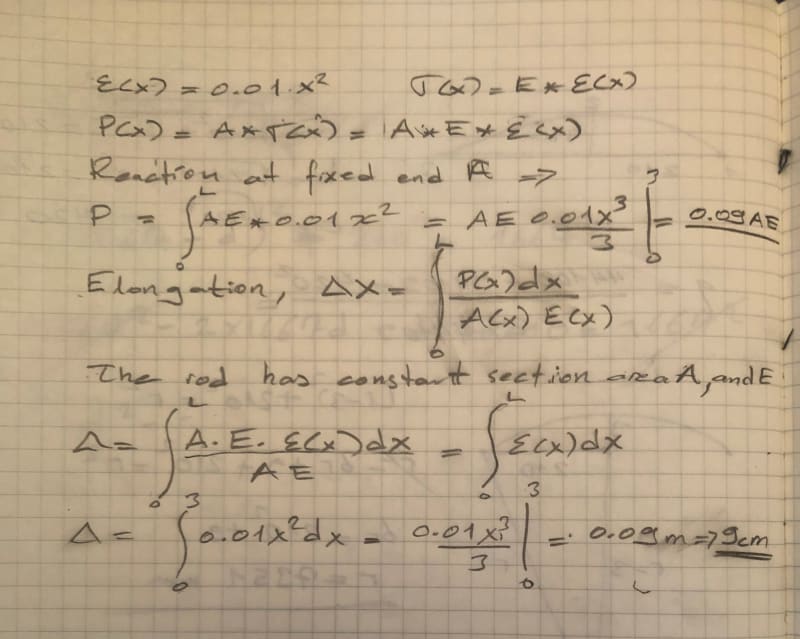Hi
We are in debate in office on the correct answer to this problem:
A uniform straight rod AB (A if fixed, B is free end)with total length of 3 meter is under some axial loads that causes strain of Ɛx = 0.01x^2
What is the axial displacement of the end B in terms of centimeter?
Interesting question. Looks simple !!!
Appreciate all steps reaching your answer
Thanks
We are in debate in office on the correct answer to this problem:
A uniform straight rod AB (A if fixed, B is free end)with total length of 3 meter is under some axial loads that causes strain of Ɛx = 0.01x^2
What is the axial displacement of the end B in terms of centimeter?
Interesting question. Looks simple !!!
Appreciate all steps reaching your answer
Thanks

